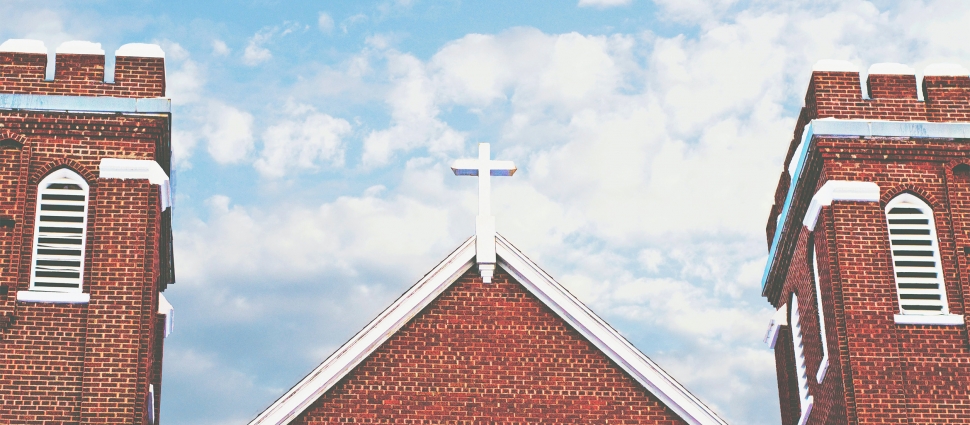How to Delight in Serving Your Church: Read the OT

In the thirty minutes after Sunday school and before morning worship, our congregation talks, drinks coffee, and nibbles muffins at long white tables in the fellowship hall. Before the pandemic forced us into social distancing, this was a predictable part of our weekly gathering. I hope it will be again.
At first glance, our “fellowship time” appears to be simply an intermission—a chance for people to relax and exchange pleasantries between the main events. But a closer look shows that this half-hour is not a pause in the action at all.
Men and women, teens and widows, members and visitors greet one another and express interest in one another’s lives; they encourage one another in the faith, and they commit themselves to specific works of service in the coming week. They plan visits to widows and meals for the sick. They identify needs and organize ways to meet them. Week after week, members of the congregation offer their time and energies to care for one another.
These seemingly-ordinary moments—in fellowship halls or church parking lots or the open spaces in the back of the sanctuary—are a sign of God’s blessing. It has always been this way. Throughout redemptive history, our loving God has deliberately gathered his people and then set them in particular places with particular functions for the good of the whole covenant community.
Old Testament Blessing
In the early days of the world, God “took the man [Adam] and put him in the garden of Eden to work it and keep it,” gave him Eve as “a helper fit for him,” and commanded them together to “be fruitful and multiply and fill the earth and subdue it, and have dominion” (Gen.1:28; 2:15, 18). Even the very first congregation had unique members who each contributed to the common good. And it was very good.
Later, in the first four chapters of Numbers, we clearly see the individual people of God functioning together under God’s direction. In chapter 1, God instructed Moses and Aaron to take a census of “all the congregation of the people of Israel” (v. 2). Though we may often be guilty of hurriedly skimming the lists of names in the next verses, they bear witness to the unique members who were each part of God’s covenant people.
God’s appointed census-takers recorded the name of each man “from twenty years old and upward” (v. 3) according to his tribe. The actual register—with the names of all 603,550 people—must have been impressive. More than half-a-million people plus their wives and children: each name representing unique gifts and graces, particular interests and skills, and specific life histories.
But the Lord doesn’t simply list the individuals and stop there; chapter 2 goes on to prescribe exactly where each one of those people belonged. Every night and every Sabbath, the journeying people of God made their camp surrounding the tabernacle, the place of God’s presence (v. 2; 9:15-23). It wasn’t up to individuals, however, to choose where they might pitch their own tents. Instead, God specifically assigned a location to each tribe. Judah received a place “on the east side toward the sunrise” (v. 3), Issachar camped next to Judah, Zebulun camped south-east of Issachar (vv. 5-7), and so on.
In addition to setting their locations for camp, God also prescribed the order in which each tribe would march out when the cloud lifted from the tabernacle (eg. v. 9; 10:11-36). The image we have is of a united and healthy congregation where each member inhabits a divinely-appointed place.
When we get to chapters 3 and 4, we take a closer look at the Levites—the priestly tribe. The census of the Levites was slightly different from that of the other tribes; God commanded Moses and Aaron to record the names of “every male from a month old and upward” (3:15). The presence of tiny babies on the lists reminds us that being a Levite was not a matter of individual decision but of God’s sovereign choosing by birth.
And, to each of the Levites, God gave a particular task associated with worship. The men of Gershon were responsible for the tabernacle’s covering, its entrance screens, its hangings, and the cords (3:23, 25-26). The Kohathites cared for the ark and its holy things (3:31), the men of Merari cared for the frames and pillars of the tabernacle (3:36-37), and the sons of Aaron guarded “the sanctuary itself, to protect the people of Israel” (3:38).
Each of these families also had a particular place to camp and specific instructions for their duties when the people of God marched out. In order for the people of God to worship him rightly, every one of the twenty-two-thousand Levites had to do the exact task God assigned.
This is a picture of God’s people as they were meant to be: Each individual in his or her God-given place of service, contributing to the good of the whole congregation, so that God’s name might be exalted among them. The pattern continued even after the Israelites entered the promised land: each fighting man joined the others to conquer the land (Num. 32:29-32), and then God distributed portions of land to each tribe according to his sovereign will (Num. 26:52-56; Joshua 15-21).
In the land flowing with milk and honey, God’s people worked and worshiped in their particular places for the common good. This was a day that Abraham and Joseph and Moses had longed to see; it was a fulfillment of God’s promise and an evidence of God’s favor toward his covenant people.
Old Testament Judgment
Sadly, following the reign of King David, Israel plummeted into unfaithfulness. The just punishment for their sin was division and, ultimately, dispersion. In the time of Rehoboam, God judged his people by dividing their one kingdom into two (1 Kings 11:31-39). Even worse, God later sent pagan nations to conquer them, scattering them as exiles to various strange lands.
The covenant people who once camped together nightly around the tent of God’s presence became homeless wanderers in hostile lands. Scattered among pagan neighbors, they could not perform the divinely-appointed acts of service that had once drawn a million hearts to worship.
No longer did God’s people joyfully gather as a congregation before him—each one exactly in his own place—at the sound of trumpets (Num. 10:3-8); instead, they lived as outcasts, stopping their ears against the cacophony of horns commanding them to bow to a golden image (Dan. 3:5).
In Israel’s exile, we see the just punishment for sin revealed in all its horror, and we rightly tremble. God’s unified people are evidence of his blessing; God’s scattered people are evidence of his judgment.
Restoration in Christ
Thankfully, God did not abandon his Old Testament people, and he does not abandon us. He mercifully gathered a remnant from the land of exile, returning them to Jerusalem to rebuild the place of his worship.
And, in Christ, he gathers us in his church to work together for his glory. From the earliest days of the New Testament church, we see a beautiful picture of restored unity and mutual dependence. The believers in the book of Acts “were of one heart and soul” as they shared their possessions, practiced hospitality, fed church widows, exercised evangelistic boldness, and worshipped God together (2:44-46; 4:29, 32; 6:1-3). Each member of the early church contributed to the common good, and the whole congregation flourished.
Throughout Scripture, unity and interdependence among God’s covenant people are a sign of God’s blessing. But, in our local churches, we can sometimes overlook this. We are often so eager to see extraordinary events—growth in numbers or financial abundance or credibility in the larger community—that we fail to delight in the ordinary grace of mutual service. When people in the church encourage one another, teach one another, serve one another, and pray for one another in dozens of small and large ways, we ought to rejoice. This is a sign of God-given life and a mark of his blessing.
Every Sunday morning, God displays his favor toward us in a pink-carpeted fellowship hall over coffee and muffins.
Megan Hill is the author of three books, including A Place to Belong: Learning to Love the Local Church, which released in May. A pastor’s wife and pastor’s daughter, she serves as an editor for The Gospel Coalition and lives in Massachusetts where she belongs to West Springfield Covenant Community Church.
Related Links
Mortification of Spin: "Missing The Body in Times of Plague"
"Where Jesus Is" by Terry Johnson
"No Social Distance in Heaven" by Aaron Denlinger
What Is the Church? with Michael Horton, Greg Gilbert, and Robert Norris [ Download ]
The Church: One Holy, Catholic and Apostolic by Richard Phillips, Philip Ryken, & Mark Dever
Note: This article is adapted from A Place to Belong: Learning to Love the Local Church and is used here by permission.




